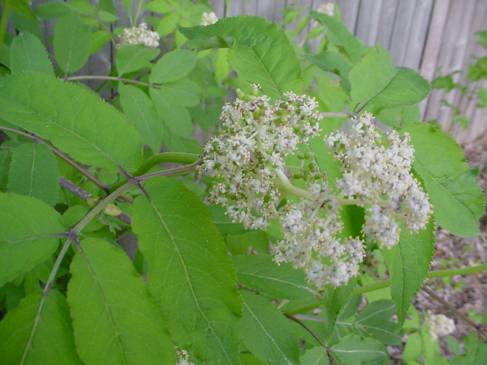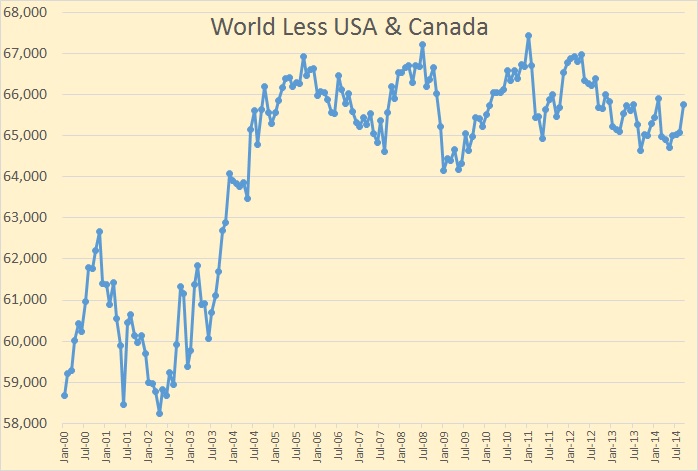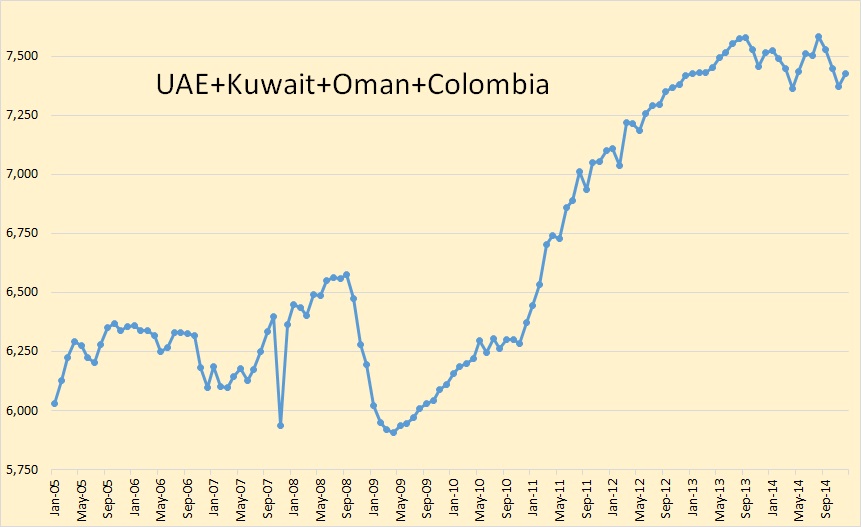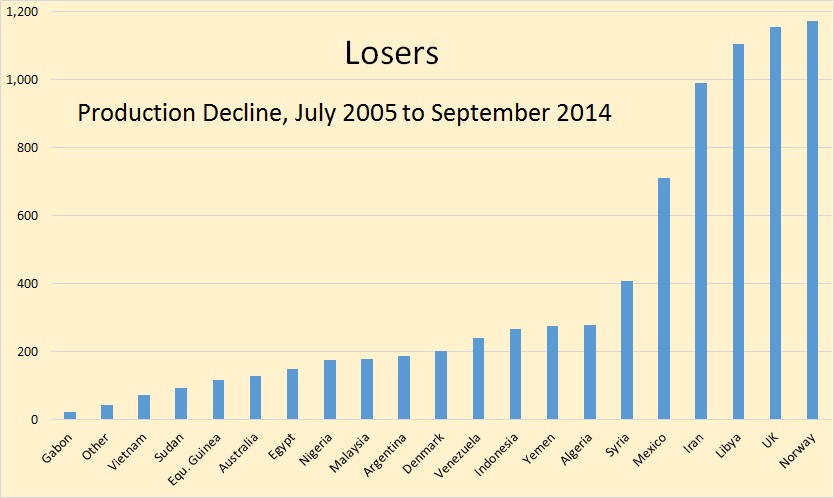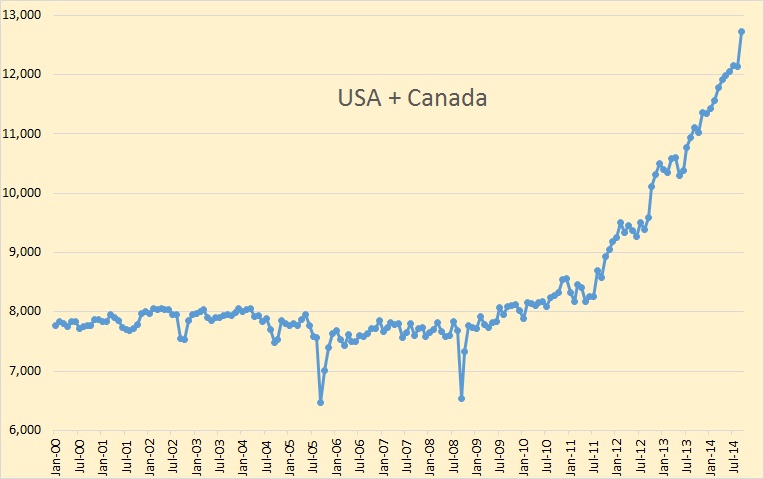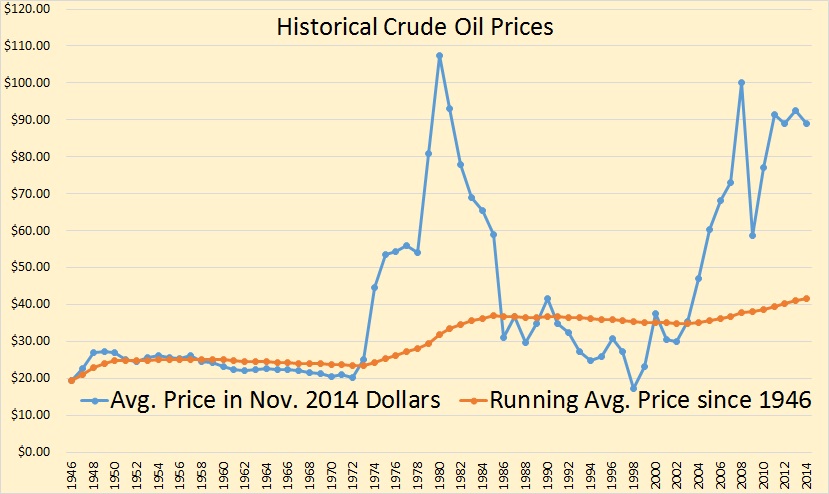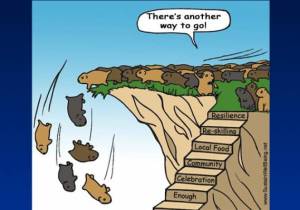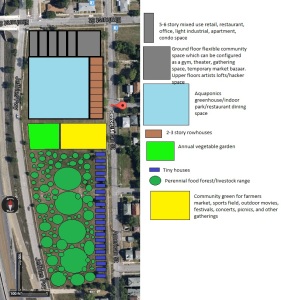We are a group of people in the Northern suburbs of Minneapolis and St. Paul Minnesota who come together to share ideas and support each other as we transition to simpler lives in community with our neighbors and our ecosystem.
Saturday, February 28, 2015
Anoka Conservation District Tree and Shrub Sale.
Anoka Conservation District Tree and Shrub Sale On Now. I will probably order some of these and will have some extra's to share at the end of April. http://www.anokaswcd.org/index.php…
Wednesday, February 25, 2015
Hey there everyone!
Those who have met me at the meetings for Transitions North know me as Mark. Here on my Blogger I have the account name of Celestial Greens, a name speaking of the interconnectedness of the Universe above and the Nature below. I'm really excited to have met you all and i'm excited to see where we go as a group.
A lot of what i've learned over the years has led me to ask myself a lot of big questions. Is there a point towards living in any media that could be destroyed because of the loss of energy utilities? How will I really cope when the grid goes down? Am I really ready for when the Grid goes down? What does this mean for my Education over the next 5 years?
Over time i've come to one conclusion will all of the questions i've asked, there needs to be a sense of priorities with everything. I've always been an introspective person, and that being said, its important that I really try to make sense of what I know, and not overwhelm myself with senseless doomsday info that is just going to make me fall apart emotionally. It only seems practical for anyone who deals with this forhtcoming knowledge about the changing of society that we strategize towards the bettering of our own needs and the needs of others.
That being said, I want to learn about how to live better on my own. I need to know what it is I need to eat, I need to know how to clothe myself warmly, I need to be prepared to possibly survive in a place where there might not be food around me at every moment. I need to work towards skill sets of gardening, storage, and many other basic tasks that the everyday person has never even thought about for probably half of their lives. Now how does one do this, when really one might not have the chance to even go out and buy a prepping book that talks about different kinds of material that is useful? Well thats why I'm here.
Over the next 6 months or so, I plan to blog on my endeavors as I begin to learn tasks that are essential towards living off the land. I plan to post different pictures of the materials I am beginning to save up and different skills I will be teaching myself. I want to share this with you all, as I know that even if some of what i'm learning is stuff you might have learned, it might be good for those who don't know as much to have a chance to learn this in a time where finding information can be an extreme challenge when there is so much, and so little time.
I don't know if I will ever be prepared enough, I don't know if any of this will be helpful to any of you all, regardless I just want others to know, its ok to not know. As long as we all do our part and work towards something, we will move towards a better life.
Celeste
Those who have met me at the meetings for Transitions North know me as Mark. Here on my Blogger I have the account name of Celestial Greens, a name speaking of the interconnectedness of the Universe above and the Nature below. I'm really excited to have met you all and i'm excited to see where we go as a group.
A lot of what i've learned over the years has led me to ask myself a lot of big questions. Is there a point towards living in any media that could be destroyed because of the loss of energy utilities? How will I really cope when the grid goes down? Am I really ready for when the Grid goes down? What does this mean for my Education over the next 5 years?
Over time i've come to one conclusion will all of the questions i've asked, there needs to be a sense of priorities with everything. I've always been an introspective person, and that being said, its important that I really try to make sense of what I know, and not overwhelm myself with senseless doomsday info that is just going to make me fall apart emotionally. It only seems practical for anyone who deals with this forhtcoming knowledge about the changing of society that we strategize towards the bettering of our own needs and the needs of others.
That being said, I want to learn about how to live better on my own. I need to know what it is I need to eat, I need to know how to clothe myself warmly, I need to be prepared to possibly survive in a place where there might not be food around me at every moment. I need to work towards skill sets of gardening, storage, and many other basic tasks that the everyday person has never even thought about for probably half of their lives. Now how does one do this, when really one might not have the chance to even go out and buy a prepping book that talks about different kinds of material that is useful? Well thats why I'm here.
Over the next 6 months or so, I plan to blog on my endeavors as I begin to learn tasks that are essential towards living off the land. I plan to post different pictures of the materials I am beginning to save up and different skills I will be teaching myself. I want to share this with you all, as I know that even if some of what i'm learning is stuff you might have learned, it might be good for those who don't know as much to have a chance to learn this in a time where finding information can be an extreme challenge when there is so much, and so little time.
I don't know if I will ever be prepared enough, I don't know if any of this will be helpful to any of you all, regardless I just want others to know, its ok to not know. As long as we all do our part and work towards something, we will move towards a better life.
Celeste
Monday, February 23, 2015
Egalitarian Thoughts
Following up on some of our discussions tonight, here are
some links to a couple of papers on egalitarian thoughts from some anthropologists
that have spent a good portion of their life’s living with and studying people
who practice the life. Unfortunately,
finding folks that are still free to live this freestyle life is becoming more
and more difficult as commercialization dominates the world.
James Woodburn, “Egalitarian Societies” available here: http://cas.umkc.edu/econ/economics/faculty/Forstater/688/Reading/Egalitarian%20societies.pdf
Christopher Boehm and others, “Egalitarian Behavior and
Reverse Dominance Hierarchy available here: http://www.unl.edu/rhames/courses/current/readings/boehm.pdf
And for a more radical take on the topic visit the Radical
Anthropology Group website here: http://radicalanthropologygroup.org/
A talk that I found interesting from this group titled “Woman’s
Biggest Husband is the Moon” can be found here:
http://radicalanthropologygroup.org/av/video/womans-biggest-husband-moon-how-hunter-gatherers-maintain-social-equality
Friday, February 20, 2015
Whitney's Action Monday Notes 2/17/2015
Tom, Bob, Mary, Nathan, Emily, Zack, Steve, Shawn
- Began discussion about Agile methods of project completion. Our very own Steve happens to have a lot of experience using Agile to complete different projects and has volunteered to give a short presentation on the subject during our next WAM* session.
For more information Bob provided a link to the Agile Manifesto. Replace the word, "software," with, "system," for a less occupationally specific version. - Looking for members willing to submit a picture (preferably of your self) and a short biographical blurb about why you and Transition are a, "thing," now.
These will be printed at some point before the Green Expo to be pinned proudly to the board that Bob has assembled for that very purpose. - The Second Annual Planting Party will be held at a slightly more appropriate time of the season this year. The date is still up in the air but It will definitely happen in April and definitely after the 9th. If there are any more things that should added to that list, ... definitely let us know.
- *Thanks to Emily we can now efficiently refer to these meetings simply as WAM.
- Briefly discussed a CSA. In the spirit of Agile Methods Emily suggested we start small and provide a CSA to people just within our own little Transition community.
- Nathan volunteered to design and deliver a form of sorts. It is intended to help us gather and organize a list of abilities, tools and equipment that we'd be willing to share with the group.
- Nathan (I think) also suggested we engineer a convenient way for people to drop off excesses of useful things. This could be used as a way for members to swap various items.
Whitney and I would like to volunteer our garage as soon as we get a chance to give it several good once-overs. Other volunteers and suggestions are welcome. - Plant sharing was discussed and well received. And for the record, Steve has a lot of comfrey to share.
- Mary mentioned that she wanted to build a solar dehydrator and the entire group mentioned that we would like very much to help her do it. If the meeting had been in Nathan or Zack's garage I'm sure the excitement would have had us build one on the spot.
For the next WAM session we hope to have gathered plans and a few materials that could go into building a few solar dehydrators.
The Piepers (Nathan and Emily) volunteered their garage for a Solar Dehydrator Build Day once we have everything we need. - The season for Maple Syrup harvesting is almost here. Bob has already found some additional spiles to use and Steve's description of a maple syrup cooking party sounds pretty enjoyable.
- Nathan suggested we put together a spring foraging event. He will be scouting out some good areas to search. If you have a favorite foraging spot of your own please tell us about it.
- The Piepers also discussed hosting a fruit tree pruning event. Stay tuned...even though the technology you're using to read has no tuner to speak of.
- Steven mentioned setting up a class on fruit tree grafting which seems to be required knowledge if we want to propagate a particular type of fruit tree reliably.
- Finally there was discussion about having different members give short, edifying presentations on things they're passionate about. If you're interested we can easily make room for your presentation during pretty much any meeting.
Thanks to all that showed and all that show interest. Thanks to the rest of you too. Seriously.
The links below were recently posted to the Transition North Twin Cities Facebook page and related to this meeting...
Bob Found: http://en.wikipedia.org/wiki/Spile
Tom Found: http://farmhack.net/tools
From Zack: Thinking more about some tools our Action Team can use to make decisions as the need arises, the SWOT analysis comes to mind. It's a simple tool that can be used to help build consensus on ideas. So, when we come to a point where we must choose between courses of action, we can perform a SWOT on each choice.
The links below were recently posted to the Transition North Twin Cities Facebook page and related to this meeting...
Bob Found: http://en.wikipedia.org/wiki/Spile
Tom Found: http://farmhack.net/tools
From Zack: Thinking more about some tools our Action Team can use to make decisions as the need arises, the SWOT analysis comes to mind. It's a simple tool that can be used to help build consensus on ideas. So, when we come to a point where we must choose between courses of action, we can perform a SWOT on each choice.
The hope is that by laying out the idea in this way, the option that makes the most sense will become more clear.
And because we are advocating for and against ideas without voting, we are building support for one idea or another rather than leaving the simple minority in the dust.
Shawn
Saturday, February 7, 2015
Future Message
An interesting vision for a better future –
Read more below from Geoff Mosley’s message from the future at the following link:
http://simplicitycollective.com/the-steady-state-economy-and-the-incompatibility-of-capitalism
So what is your vision for the future and how do we get there?
- "Our main aim is to live sustainably and cooperatively. We seek and enjoy a good life rather than material accumulation and privilege. We see ourselves as belonging to the earth rather than the earth belonging to us and do not see ourselves as superior to other living things. Similarly, our attitude of non-superiority applies to our view of other human beings. In our classless society all people are regarded as equal and treated equally throughout their lives and this has brought obvious benefits in terms of health, education, satisfying work and involvement in governance. The community not individuals own and regulate the land and its resources. Private ownership of land and resources has been fully replaced by cooperative ownership and organisation at the local community level."
Read more below from Geoff Mosley’s message from the future at the following link:
http://simplicitycollective.com/the-steady-state-economy-and-the-incompatibility-of-capitalism
So what is your vision for the future and how do we get there?
Wednesday, February 4, 2015
ReBlog: Why we are at Peak Oil Right Now
Originally posted at: http://peakoilbarrel.com/peak-oil-right-now
In this life nothing is certain. Therefore I am not declaring, absolutely, that we are at peak oil, only that it is a near certainty. But I am putting my reputation on the line in making the claim that the period, September 2014 through August 2015 will be the year of Peak Oil. Below are my reasons for making this claim.
First of all, Peak Oil is not a theory. The claim that Peak Oil is a theory is more than a little absurd. Fossil hydrocarbons were created from buried alga millions of years ago and they are finite in quantity. And as long as we keep extracting them in the millions of barrels per day, it is only common sense that one day we will reach a point where their extraction starts to decline. In fact most countries where oil is extracted are already in decline. So obviously if individual countries can experience peak oil then the world as a whole can also experience peak oil.
All charts below are in thousand barrels per day of Crude + Condensate with the last data point September 2014.
First I want to deal with the portion of the world that reached peak oil about four years ago, in January 2011. That is everywhere else in the world except the US and Canada. I am not saying that every country outside the US and Canada has reached peak oil, but combined they have reached peak oil
The world outside the United States and Canada has been on a bumpy plateau for ten years now and now, even with that last September 2014 surge, is still 1,670,000 barrels below the peak of January 2011. However only a few countries is responsible for this plateau.
The bumpy plateau actually began back in 2005 where the peak was in July. Since them, outside the USA and Canada, there have been 15 countries with production increases and 21 countries with production declines. Here is a look at the 15 winners outside the US and Canada.
Dealing with the winners one at a time:
Iraq: The EIA has data only through September but Iraq has actually increased production by about 300 kbd to December. but word is they are slightly down in January. That puts Iraq up almost 1.5 million barrels per day since they started their massive infill drilling program in 2009. Iraq still has some upside potential but their downside risk now even greater.
Russia: Russia has peaked, even according to Russian analyst. They will decline only slightly in 2015 but their decline will accelerate after that.
Brazil: Brazil has some upside potential and a lot of downside potential. The finances of Petrobras are a damn mess. Moody’s has downgraded them to Baa3, just one notch above junk status and further downgrades is expected soon. To increase their pre-salt production much more will require a lot more borrowed money. That is not very likely.
Qatar: The EIA says Qatar C+C production increased by 598,000 barrels per day between July 2005 and September 2014. The OPEC Monthly Oil Market Report says their crude only production declined by 78,000 barrels per day during that time span. The chart above was made with EIA data which counts condensate as oil. OPEC reports only crude. On the char below the EIA data is through September, the OPEC data is through December 2014.
The EIA says Qatar has increased condensate production from her massive natural gas fields. Qatar crude oil production is in decline and has been since 2008. Qatar crude will continue to decline and their condensate is likely at a peak also.
Angola: Angola peaked in 2009 and 2010 and is now in decline. However some of the decline is caused by political problems. Those problems will likely get worse.
Colombia: Colombia’s production has doubled in the last 8 years but they reached their peak in 2013 and have held almost flat for the last two years. Colombia has peaked and will decline, though that decline will likely be very slow. I have included Colombia in the chart below that shows four countries that have recently peaked.
Kazakhstan: Kazakhstan is at peak of currently producing fields. Production will likely decline until Kashagan comes on line sometime in 2017. This field that once promised to produce over a million barrels per day is now expected to barely produce 300,000 barrels per day… if it ever manages to come on line. But nothing spectacular is expected out of Kazakhstan, especially since its old fields are expected to start to decline soon.
China: China peaked in 2010 and has held pretty well steady since then. I expect China will start to decline soon.
Azerbaijan: Azerbaijan peaked in 2010 and has been in steady decline since.
UAE, Oman and Kuwait: All three of these Middle East countries have implemented massive infill drilling programs in the last decade or so. But all three have now peaked. These three nations, along with Colombia, show a beautiful increase in production then a rounding peak at the top.
These four countries are responsible for 1.5 million barrels per day of the increase since 2005. They have all four now peaked, or at least very near their peak.
Saudi Arabia: Saudi has brought their last mothballed field on line, Manifa. Now they have none. Saudi is producing flat out. They might, with great effort, produce a few more barrels per day, but basically they are at peak right now.
And a look at the 21 losers.
I have changed the negative numbers to absolute numbers in order to make it easier to read. But basically these are the nations that have peaked and are now in decline. A couple, Iran and Libya, because of political problems, have declined a lot more than they would have without that conflict. However neither is likely to recover very soon. And even when they do, it will be to a point lower than they were before their problems. Syria and Sudan, including South Sudan, and Yemen are others that will not recover in this decade, or until long after we are on the down-slope of peak oil.
That brings to the US and Canada.
The USA and Canada are responsible for about 120% of the increase in world oil production since 2005, even though they did not begin their grand ascent until 2009. Canada’s over 400,000 bpd increase in September is responsible for that last spike upward. But can this continue?
In a word… no. The gain has been almost all LTO and oil sands. And low prices are killing both. If prices stay low both Canada and the USA will begin to decline by the second half of this year. But even if prices return to the $70 ti $80 range, (it is not likely they are going higher than that), their production will still not increase fast enough to offset the decline in the rest of the world.
But what about those massive reserves still in the ground? Many say we have not yet produced half the URR, the Ultimate Recoverable reserves, and until we are at least that half way point, we cannot be at peak oil. Well, there are a few really serious problems with that logic. First, what is meant by the word “recoverable”? And at what price? Let’s look at really important chart.
The 2014 data point on the chart below is the average January through November.
Here is a chart of Historical Crude Oil Prices. The average price, the blue line, is the average price of oil for that year. The orange line is the average price from 1946 to any point on that line. For instance the average price of oil for the 34 years from 1946 through 1973 was $23.68. And that in today’s dollars. From 1946 through 1973 oil companies were getting an average of $23.68 a barrel for their oil, and they were making a pile of money at that price. Today, the price is more than twice that amount, and many of them are losing a pile of money.
So let’s get back to reserves. The reserves produced in 1973 and prior years was very profitable at less than $24 a barrel. Then all hell broke loose in the Middle East and prices skyrocketed. Then for the next dozen years oil companies made windfall profits. But in 1986 oil prices came down to normal. Between 1986 and 2002 oil prices averaged $30.42 a barrel. (Not shown on the chart.) Even at that price oil companies still made huge profits. But today they are losing money at $50 a barrel.
The problem is with those “reserves”. Today’s reserves are just not the same as those earlier reserves. All the good cheap stuff has already been sucked up. We are now left with dredges at the bottom of the barrel.All today’s new oil is harder to find, depletes a whole lot faster, and cost many times as much to produce. None of the cheap stuff is left except in a few old super giant fields that are undergoing infill drilling like there is no tomorrow.
Once again, we are at peak oil right now. The peak will straddle the 2014 and 2015 time line. 2016 will be the first full post peak calendar year. It really doesn’t matter how many barrels of oil is left in the ground. The point is we will never again pull it out of the ground at the same rate we are pulling it out right now.
_______________________________________
ReBlog:Cheap Oil Does Not Mean That Peak Oil Is a Myth
by Chris Rhodes, originally published by Energy Balance
Peak oil is a fundamental tenet of the Transition Towns concept, but the current return of “cheap oil” has muddied the waters about how to discuss it: https://www.transitionnetwork.org/blogs/rob-hopkins/2015-02/transition-agony-aunt-how-talk-about-peak-oil
At a recent meeting of Transition Town Reading (U.K.), we discussed the prevailing low oil price, and the group asked me to put together some salient points on the subject, set within the context of whether or not we can now dismiss peak oil, e.g. as is currently being contested.http://peakoilbarrel.com/will-2015-peak-oil/ http://www.counterpunch.org/2015/02/02/why-the-crash-in-oil-prices-should-bury-peak-oil-once-and-for-all/
The following points are based on an article that I wrote on this bloghttp://ergobalance.blogspot.com which was re-posted on Resilience.orghttp://www.resilience.org/stories/2015-01-16/fossil-fuel-use-is-limited-by-climate-if-not-by-resources Most of the references that I have drawn from are in the links posted there, with a few more added into the text below. Some of the points overlap with each other, but hopefully expand their perspective in so doing:
(1) Peak oil is NOT when oil runs out, but it is the point at which the maximum rate of production of oil is reached, globally. Beyond the peak, global production falls relentlessly. New technologies can extend the supply, but the cost of production rises accordingly.
(2) Peak oil is expected to happen as a result of geological/ technical/ geopolitical factors, but it may also be that a very high price of production (mainly due to these factors) makes oil less affordable, reducing consumption, so production “peaks” for this reason.
(3) Different nations/regions will peak at different times, but “peak oil” refers to the global maximum.
(4) Over half of the world’s major oil-producing nations have passed their production peak. http://www.resilience.org/stories/2014-06-26/the-oil-production-story-pre-and-post-peak-nations
(5) The decline in production rate from existing oil fields amounts to a loss of 3.5 million barrels a day, per year. To maintain overall supply (around 30 billion barrels per year), the equivalent of a new Saudi Arabia’s worth of production must be brought on-stream every 3 years or so.http://www.theguardian.com/environment/earth-insight/2013/dec/23/british-petroleum-geologist-peak-oil-break-economy-recession
(6) This (5) means that new production has to grow relentlessly, year on year, such that by 2030 (only 15 years time) we must install new production to the tune of around 5 Saudi Arabias.
(7) It is not only the (large) total of the oil that must be produced (200 billion barrels by 2030), but [reinforcing (6)] that the production rate of the “new oil” has to increase relentlessly to meet the decline from existing conventional fields. http://www.peakoil.net/200-billion-barrels-of-new-oil-production-is-needed-by-2030
(8) It is production rate that is critical, more than the size of the reserves. “The size of the tap, not the tank”. Of course, the oil has to be there in the first place, but it is how fast it can be got out of the ground that determines whether the overall global production rate can be maintained.
(9) The conventional fields being found now tend to be smaller than they were. The 20 largest oil fields in the world account for 25% of total global oil production, of which the majority are already in decline. “Giant” oil fields (those containing 500 million barrels or more) currently provide 60% of the world’s oil supply, but their discovery peaked decades ago.http://www.energyandcapital.com/articles/peak-oil-investments/1603
(10) This means that most of the new production has to be from unconventional “oil” sources. These are more difficult and expensive to produce from, and have a lower energy return on energy invested (EROEI) than for conventional oil. This is likely to translate into lower production rates per unit of $ or unit of energy.
(11) There is an inverse correlation between EROEI and $ price for different oil sources, i.e. lower EROEI, higher $ price.http://rsta.royalsocietypublishing.org/content/372/2006/20130126
(12) Chevron have released a presentation for their investors [emphasising (10)] which indicates an expectation that 40% of the “new oil” will come from deepwater fields, 20% from U.S. shale, 10% from increased tar-sands production, 25% from OPEC growth (Venezuelan extra-heavy oil?), and around 5% each from shale outside of the U.S. (Russia?) and “onshore and shallow offshore”. http://www.peakoil.net/200-billion-barrels-of-new-oil-production-is-needed-by-2030
(13) Chevron also stress that production from these sources will not come cheap, and will probably be of the order of $100 a barrel (“Breakeven price” or “marginal cost”).
(14) Hence at under $50 a barrel selling price, these projects will not go ahead, or they will be money-losers (cost more to produce the oil than it sells for). This year, $150 billion worth of new projects may face the axe, which are mainly from heavy-oil, deepwater, tar-sands and shale-oil.
(15) Lack of new infrastructure now will mean a reduced production rate, a year or so down the line.
(16) So why is oil so cheap? There are various contributing factors relating both to supply (production rate) and demand. The main supply factor is that production of U.S. shale oil has increased rapidly to 3.5 million barrels a day, along with the renewed oil production from Iraq and Libya. Saudi produce one third of OPEC’s output, and this time they have refused to cut production because they want to keep (grow?) their share of the market.
(17) At the same time, demand has fallen because the global economy (especially China) has slowed down. Since everything we do uses oil, when an economy is strong the demand for oil goes up, and when the economy weakens, demand goes down.
(18) The result of (16) and (17) is a glut of oil. According to supply/demand considerations, the price goes down. It only takes 1% or so, in undersupply or oversupply, to push the price of a barrel of oil to above $100 or (as we have seen recently) down to $50. http://www.resilience.org/stories/2015-01-12/the-oil-price-fall-an-explanation-in-two-charts
(19) So, can we now forget about peak oil? No. Due to (5) and (14/15), the oversupply of oil will peter out. We still have the background global decline rate, so needing to produce a new Saudi every 3 years, and from unconventional oil, which is more difficult, tends to have a lower net energy return, and is expensive. Due to the current low oil price, new infrastructure is now not being built, meaning a further loss in production a year or so ahead.
(20) Then the price will then go-up again (supply/demand). But it has to, or producing much of the oil that is left would be a money-loser. The price has to go above the breakeven price (cost of production) for new investment to be worthwhile.
(21) The only way the price could maintain a sustained low is if the global economy continued to slow, so the demand not only didn’t grow but actually fell. This, naturally would have its own adverse consequences. If the price were to rise massively, e.g. to $150-200 a barrel, oil would become increasingly unaffordable, which would also reduce demand.
(22) So long as the selling price of oil stays above the “shut-in” price, existing production will mostly continue. If, however, it were to fall below this level (say, $20 a barrel), much global production would actually lose money, and be shut-down. This might reduce the world oil supply rapidly and massively, to the point that the world economy would stutter, and restarting both the oil production and the economy in its wider sense, might prove extremely difficult (worst case scenario!).
(23) While a low oil-price is seen by the consumers as a good thing., i.e. sales of Hummers and other SUVs are at a record high, because the full-prices are low!, it’s no fun for the oil-producers. Saudi get 90% of their GDP from selling oil; Venezuela, 50%; Russia, 35%. To balance their national budgets, all these countries need oil at $100 a barrel. At $50, Venezuela may go bankrupt. Saudi has deeper pockets, and can hold out for longer. Russia is interesting, especially as they control much of the gas-supply to Europe. If they held it back, even for a week...
(24) While the return of a sufficiently high price may encourage new investment, it is unlikely that we can grow production of new oil to equal five Saudi Arabias within the next 15 years, especially from sources that are more expensive and more difficult to produce from than the oil they must serve to replace. Therefore, we can anticipate a contraction of the global oil supply within this timescale.
(25) Once the production rate of new (unconventional) oil can no longer match the rate of decline of conventional oil, the global production overall must decline, i.e. we will be at peak oil. How exactly this happens and when, will be determined by the interplay of the factors mentioned above, but to quote Fatih Birol (Chief Economist and Director of Global Energy Economics at the International Energy Agency in Paris):
(26) There is the climate-change aspect too, since burning oil contributes around one third of the carbon emissions that are due to human activities.http://cdiac.ornl.gov/GCP/images/fuels_co2_emissions.jpg
Peak oil is a fundamental tenet of the Transition Towns concept, but the current return of “cheap oil” has muddied the waters about how to discuss it: https://www.transitionnetwork.org/blogs/rob-hopkins/2015-02/transition-agony-aunt-how-talk-about-peak-oil
At a recent meeting of Transition Town Reading (U.K.), we discussed the prevailing low oil price, and the group asked me to put together some salient points on the subject, set within the context of whether or not we can now dismiss peak oil, e.g. as is currently being contested.http://peakoilbarrel.com/will-2015-peak-oil/ http://www.counterpunch.org/2015/02/02/why-the-crash-in-oil-prices-should-bury-peak-oil-once-and-for-all/
The following points are based on an article that I wrote on this bloghttp://ergobalance.blogspot.com which was re-posted on Resilience.orghttp://www.resilience.org/stories/2015-01-16/fossil-fuel-use-is-limited-by-climate-if-not-by-resources Most of the references that I have drawn from are in the links posted there, with a few more added into the text below. Some of the points overlap with each other, but hopefully expand their perspective in so doing:
(3) Different nations/regions will peak at different times, but “peak oil” refers to the global maximum.
(4) Over half of the world’s major oil-producing nations have passed their production peak. http://www.resilience.org/stories/2014-06-26/the-oil-production-story-pre-and-post-peak-nations
(5) The decline in production rate from existing oil fields amounts to a loss of 3.5 million barrels a day, per year. To maintain overall supply (around 30 billion barrels per year), the equivalent of a new Saudi Arabia’s worth of production must be brought on-stream every 3 years or so.http://www.theguardian.com/environment/earth-insight/2013/dec/23/british-petroleum-geologist-peak-oil-break-economy-recession
(6) This (5) means that new production has to grow relentlessly, year on year, such that by 2030 (only 15 years time) we must install new production to the tune of around 5 Saudi Arabias.
(7) It is not only the (large) total of the oil that must be produced (200 billion barrels by 2030), but [reinforcing (6)] that the production rate of the “new oil” has to increase relentlessly to meet the decline from existing conventional fields. http://www.peakoil.net/200-billion-barrels-of-new-oil-production-is-needed-by-2030
(8) It is production rate that is critical, more than the size of the reserves. “The size of the tap, not the tank”. Of course, the oil has to be there in the first place, but it is how fast it can be got out of the ground that determines whether the overall global production rate can be maintained.
(9) The conventional fields being found now tend to be smaller than they were. The 20 largest oil fields in the world account for 25% of total global oil production, of which the majority are already in decline. “Giant” oil fields (those containing 500 million barrels or more) currently provide 60% of the world’s oil supply, but their discovery peaked decades ago.http://www.energyandcapital.com/articles/peak-oil-investments/1603
(10) This means that most of the new production has to be from unconventional “oil” sources. These are more difficult and expensive to produce from, and have a lower energy return on energy invested (EROEI) than for conventional oil. This is likely to translate into lower production rates per unit of $ or unit of energy.
(11) There is an inverse correlation between EROEI and $ price for different oil sources, i.e. lower EROEI, higher $ price.http://rsta.royalsocietypublishing.org/content/372/2006/20130126
(12) Chevron have released a presentation for their investors [emphasising (10)] which indicates an expectation that 40% of the “new oil” will come from deepwater fields, 20% from U.S. shale, 10% from increased tar-sands production, 25% from OPEC growth (Venezuelan extra-heavy oil?), and around 5% each from shale outside of the U.S. (Russia?) and “onshore and shallow offshore”. http://www.peakoil.net/200-billion-barrels-of-new-oil-production-is-needed-by-2030
(13) Chevron also stress that production from these sources will not come cheap, and will probably be of the order of $100 a barrel (“Breakeven price” or “marginal cost”).
(14) Hence at under $50 a barrel selling price, these projects will not go ahead, or they will be money-losers (cost more to produce the oil than it sells for). This year, $150 billion worth of new projects may face the axe, which are mainly from heavy-oil, deepwater, tar-sands and shale-oil.
(15) Lack of new infrastructure now will mean a reduced production rate, a year or so down the line.
(16) So why is oil so cheap? There are various contributing factors relating both to supply (production rate) and demand. The main supply factor is that production of U.S. shale oil has increased rapidly to 3.5 million barrels a day, along with the renewed oil production from Iraq and Libya. Saudi produce one third of OPEC’s output, and this time they have refused to cut production because they want to keep (grow?) their share of the market.
(17) At the same time, demand has fallen because the global economy (especially China) has slowed down. Since everything we do uses oil, when an economy is strong the demand for oil goes up, and when the economy weakens, demand goes down.
(18) The result of (16) and (17) is a glut of oil. According to supply/demand considerations, the price goes down. It only takes 1% or so, in undersupply or oversupply, to push the price of a barrel of oil to above $100 or (as we have seen recently) down to $50. http://www.resilience.org/stories/2015-01-12/the-oil-price-fall-an-explanation-in-two-charts
(19) So, can we now forget about peak oil? No. Due to (5) and (14/15), the oversupply of oil will peter out. We still have the background global decline rate, so needing to produce a new Saudi every 3 years, and from unconventional oil, which is more difficult, tends to have a lower net energy return, and is expensive. Due to the current low oil price, new infrastructure is now not being built, meaning a further loss in production a year or so ahead.
(20) Then the price will then go-up again (supply/demand). But it has to, or producing much of the oil that is left would be a money-loser. The price has to go above the breakeven price (cost of production) for new investment to be worthwhile.
(21) The only way the price could maintain a sustained low is if the global economy continued to slow, so the demand not only didn’t grow but actually fell. This, naturally would have its own adverse consequences. If the price were to rise massively, e.g. to $150-200 a barrel, oil would become increasingly unaffordable, which would also reduce demand.
(22) So long as the selling price of oil stays above the “shut-in” price, existing production will mostly continue. If, however, it were to fall below this level (say, $20 a barrel), much global production would actually lose money, and be shut-down. This might reduce the world oil supply rapidly and massively, to the point that the world economy would stutter, and restarting both the oil production and the economy in its wider sense, might prove extremely difficult (worst case scenario!).
(23) While a low oil-price is seen by the consumers as a good thing., i.e. sales of Hummers and other SUVs are at a record high, because the full-prices are low!, it’s no fun for the oil-producers. Saudi get 90% of their GDP from selling oil; Venezuela, 50%; Russia, 35%. To balance their national budgets, all these countries need oil at $100 a barrel. At $50, Venezuela may go bankrupt. Saudi has deeper pockets, and can hold out for longer. Russia is interesting, especially as they control much of the gas-supply to Europe. If they held it back, even for a week...
(24) While the return of a sufficiently high price may encourage new investment, it is unlikely that we can grow production of new oil to equal five Saudi Arabias within the next 15 years, especially from sources that are more expensive and more difficult to produce from than the oil they must serve to replace. Therefore, we can anticipate a contraction of the global oil supply within this timescale.
(25) Once the production rate of new (unconventional) oil can no longer match the rate of decline of conventional oil, the global production overall must decline, i.e. we will be at peak oil. How exactly this happens and when, will be determined by the interplay of the factors mentioned above, but to quote Fatih Birol (Chief Economist and Director of Global Energy Economics at the International Energy Agency in Paris):
“One day we will run out of oil, it is not today or tomorrow, but one day we will run out of oil and we have to leave oil before oil leaves us, and we have to prepare ourselves for that day. The earlier we start, the better, because all of our economic and social system is based on oil, so to change from that will take a lot of time and a lot of money and we should take this issue very seriously."
(26) There is the climate-change aspect too, since burning oil contributes around one third of the carbon emissions that are due to human activities.http://cdiac.ornl.gov/GCP/images/fuels_co2_emissions.jpg
Monday, February 2, 2015
Guest Post: Into the Gaping Maw of Decline
Originally Published At: The Daydream Emporium by our own Zack Ellsworth.
I remember learning in high school Western Civilization class that the Roman Empire, including the Old Republic, lasted 1,000 years. I remember marveling at that number, wondering what it would be like to be a citizen living near the end of the empire, gazing back over 1,000 years of your State being the most powerful force on earth. It must have felt as though it was eternal, invincible, always to be. And yet, through the lens of history, I knew what was in store for that citizen of Rome. I wondered how they would have taken watching this god-like force systematically crumble to ruin. Would they have been able to comprehend it? Could they have seen it coming? Could they have done anything to change what is now viewed as inevitable?
Here, at this moment in time, I feel I’ve no more need to wonder.
It seems, this time on a much more global scale, that Western Civilization is once again slipping into the abyss. The cause of this decline, though there are many, just as Rome had many, is chiefly due to the decline of cheap, abundant, easily accessible oil; the lifeblood of our modern age. Yes, dear reader, this is the end, or damn near it. It won’t happen all at once nor evenly to all people because, as many commentators on the issue are fond of saying, “complex systems collapse in complex ways”. I won’t dive to far into the weeds here about how I’ve come to believe this, I’ll put links at the end of this post to sources that have helped shape my views. I will give you this bit of food for thought, though: the days of striking it rich as easily as Jed Clampett shooting at his food are, for the most part, long gone. All the hype about deep water drilling, fracking, tar sands, and so forth all gloss over the fact that each method takes a lot more energy to produce than methods we used to rely on more. That means we get a lower energy return on energy invested ratio (EROEI) than we used to, meaning we need to use more energy to drill more to get the same energy at the end product. Fossil energy production is in decline.
It seems, this time on a much more global scale, that Western Civilization is once again slipping into the abyss. The cause of this decline, though there are many, just as Rome had many, is chiefly due to the decline of cheap, abundant, easily accessible oil; the lifeblood of our modern age. Yes, dear reader, this is the end, or damn near it. It won’t happen all at once nor evenly to all people because, as many commentators on the issue are fond of saying, “complex systems collapse in complex ways”. I won’t dive to far into the weeds here about how I’ve come to believe this, I’ll put links at the end of this post to sources that have helped shape my views. I will give you this bit of food for thought, though: the days of striking it rich as easily as Jed Clampett shooting at his food are, for the most part, long gone. All the hype about deep water drilling, fracking, tar sands, and so forth all gloss over the fact that each method takes a lot more energy to produce than methods we used to rely on more. That means we get a lower energy return on energy invested ratio (EROEI) than we used to, meaning we need to use more energy to drill more to get the same energy at the end product. Fossil energy production is in decline.
When people have looked at this issue and gotten passed the phase that everything can continue as usual (denial) and come to the conclusion that massive change will happen one way or another, as I have come to believe, they generally react in one of three ways. There’s the manic hedonist (anger) who figures past generations have screwed us over so much that there’s little hope of long term survival and the best thing to do is to squeeze as much life out of the system while we can, without care for future generations. There’s the doomer (depression) who wallows in despair and makes no attempt to change what is seen as inevitable. Finally, there’s the techno-optimist (bargaining), convinced the wonders of technology will save us with high-tech, clean, green solutions that will let us keep our lifestyles, just tweak things to take away the environmental impacts our technologies make.
So, what’s a well-meaning, environmentally-conscious activist, who doesn’t accept the aforementioned courses, to do? I say turn and face the strange. Embrace decline (acceptance) as the likeliest course for Civilization, and work on adapting for the future and setting up configurations that may stand after the dust of Civilization’s fall has settled.
There are, of course, barriers to this kind of reconfiguration. The inertia of Civilization is great. The cults of material progress and infinite growth hold not only our minds, but our actions, in a vice grip. Sure, you could disconnect from the grid, go live a subsistence life in the wilderness, and actually live your values completely. But you sacrifice relevancy, meaningful input, and persuasive power to change the narrative of modern culture. Also, if and when the armatures of law and policing do fail with the rest of Civilization, you would find yourself in a more vulnerable position because the next ruler of the land may feel no encumbrance of a legal system and have no compunction about exploiting what surplus you have built for yourself (i.e. killing you and taking your stuff). This shows the flaw in the individualist, be the change, DIY mentality that is preached to those that want to change the system. Individual change is possible, and somewhat meaningful, but ultimately cannot make the needed impact on the system at large.
Systemic problems demand systemic changes, and that can only be accomplished when a more sizable group of people come together to build that new system. So, say you’ve found your rag-tag band of post-oil community builders. Where do you go to start building the infrastructure needed to live your values? Well, you could spend decades trying to change whatever community you find yourself in, raging against the ingrained apathy, lack of awareness, and mistrust of anything beyond the status quo. You could fight local ordinances which tie your hands and competing interest groups who view you as little more than a nuisance (I pity you doubly if you find yourself in a disconnected suburb, as I do).
After all this you may end up bitter and broken, angry at the world that refused to take heed of your message. In fact, I can probably estimate your chances of accomplishing anything based just on the overall socioeconomic status of your community. For, as you go up the ladder of affluence, you see a greater skew towards the status quo. After all, whatever conditions gave people the chance to make more and more money must, in there view, be right and good.
However, the reverse then must also be true and here we come to a blind spot in capitalism. For as we go down the ladder of affluence, we see greater potential for change, less adherence to the narratives that underpin the current system. That malleability of poor places has, in the past, left it susceptible to gentrification, placement of polluting facilities, and neglect from both government and society at large. But I think we can flip that script if we come in not as conquerors, nor liberators, but rather as simply future neighbors, willing to share ideas and learn. To be co-creators of a future of greater self reliance and fewer of the limitations imposed by the current system. This mentality of allies is especially important if you are going into a place where the predominant culture is not that of your own.
As pioneers, you will likely be viewed with a lot of suspicion at first. You will likely see a lot of lifestyles that clash violently with your sense of morality. While drugs, prostitution, violence, etc. exist across the social strata, they are much more visible at the lower levels. I urge you strongly to get beyond your initial revulsion and desire to confront these injustices directly or through the police, and try and empathize with these fellow humans and learn more about what has brought them to their current state of existence. There iscompelling evidence, for example, that most drug addiction can be linked to meaningful connections and support lacking in an addict’s environment. I think you will find that most of the other people leading these destructive lifestyles are also largely products of their circumstances.
Viewing things this way, without judgment or condemnation, actually leaves you and your group in a really good position to be taken seriously and eventually accepted by the local community. Where options for success often mean working several dead end jobs at once, engaging in criminal activity, or leaving, you present a fourth option. By setting up operations to grow food, medicine, timber, fiber for textiles, you can provide decent jobs for local people, jobs that pay well and provide dignity and buy-in to your philosophy. There are people who have used permaculture to do just that.
Setting up unconventional organizations should be relatively easy in places designed to favor outsiders coming in and doing what they want, where land and rent is super cheap,where people are not organized enough to resist any change they may not at first understand, and where regulations are often loosely enforced or not at all.
Once you are set up and running, getting that initial success at something, anything, no matter how long it takes to become profitable, will become the first pebble set rolling that will build on itself. Others will take your example and create more endeavors like yours. This will reinforce and support one another and set bigger and bigger rocks rolling until you are amid a landslide of change and your initial group and your new neighbors have integrated with one another and become something different than the initial two.
I have written before that all wealth must eventually be based on primary production from the energy from the sun and earth. Because you are helping create a lot more primary producers, you are producing a lot more actual wealth in the community than existed before. With that wealth, you and your neighbors are much more interdependent on one another and therefor less in need of things like jobs from the outside. Because you and your neighbors are healing themselves and creating a more nurturing environment, problems like drugs and violence will diminish, not just move elsewhere like with gentrification, but actually help make whole the people caught up in damaging cycles. This is real resilience. This is a real answer to climate change, peak oil, post high-tech living, and modern neighborhood blight.
This community may be a bit hard for you to envision, even with your great powers of imagination, dear reader, because it’s likely I made some mental leaps in this essay that you didn’t come along with me for. So let’s do a little visualization exercise and flesh out what a possible start, progression, and end-state could be for your initial project.
As you probably know, oh astute reader, Detroit, Michigan is in a rough spot. In many ways, though, it is ahead of the game. It’s been in decline for some time, even before bankruptcy, so it has already learned many of the lessons the other major American cities will soon have to learn. Search any real estate listings and you will find pages of houses selling for $1,000 or less. But for us, this is great. With a few thousand dollars you could buy an entire blighted block. So let’s start there, in a neighborhood with many houses with not only overgrown lawns, but actual trees growing out of them. On the corner of Tuxedo St. and American St. there’s a large vacant lot that looks like it maybe used to have houses on it. We will ignore the zoning, soil pollution, and other potential barriers for now and just pretend it is an ideal site within our price range. It’s about 300′ by about 1,000′, or almost 7 acres, nice!
The very first thing you should do is set up your temporary housing. Yurts, tiny houses on wheels, hobbit houses, scavenged lumber sheds, whatever you can make do with and get away with without the city coming down on you, go for it.
I feel it’s important to note that it’s probably wise to leave that 80 inch 3D HD TV, the vintage Camaro, and all your other high priced executive toys at home. Remember you are trying to integrate with a probably already suspicious community. Also, no need to give anyone a reason to rob you. Just sell anything really valuable before you move, you’ll need the money for your new endeavor anyway.
Now it’s time to meet the neighbors. I suggest you really go out of your way to be inviting and friendly. Throw a barbecue and use the opportunity to show and tell about your vision for the space and how you want to fit into the community. Don’t forget to invite leaders of local civic and religious organizations.
OK, it’s time to begin work. Work together with your group and any interested locals to really flesh out your ideas and get a coherent plan to phase in your ideas that everyone is on board with. Remember the permaculture design principles, use them as much as you can. The first things you plant should be pioneer species to help prepare and heal the land for latter use. Didn’t bring any pioneer species seed? This is a good opportunity to start taking inventory and mapping out free resources, like plants and building materials, in your local area.
Year one should be all about getting a yield for the least effort and money and about building connections with locals. Hiring locals as much as you can will help build goodwill and bring in new ideas. After that you can worry about setting up more permanent infrastructure and experimenting with riskier endeavors.
Here’s just one example of what the end state could look like once you have established a few streams of income and are an accepted part of the community. It’s important to observe the principle of small and slow solutions, as well as allow for emergence. So things should progress in increments so you can gauge if you are on the right track, adapt to internal and external changes, and adjust course accordingly. This example provides year-round local food production, a diversity of community space, appropriate urban housing, good local jobs, and mixed use commercial, residential, and industrial development.
Feeling inspired to get together a group of post-peak pioneers? I hope so, but if this idea seems a bit too scary, you could just wait a few years until the suburbs start going bankrupt and emptying out. Let me know what you think about this. Are there better ways to establish this type of community?
That’s all for this week, dear reader. I plan to try and post once a week from now on. I have enough ideas sketched out for a year’s worth of postings, so we’ll see how it goes.
Until next time, dream on!
-The Daydreamer
Subscribe to:
Posts (Atom)
